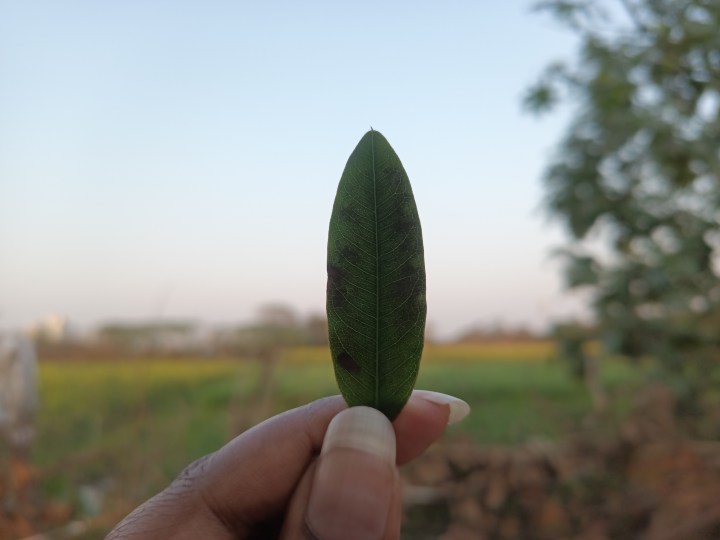Phones have become incredibly smart in recent years. Devices such as the Samsung Galaxy S24 Ultra now have chipsets powerful enough to run AI applications right on the device — something most computers, including my four-year-old MacBook, can barely dream of.
Simultaneously, the surge in phones’ capabilities has also led to larger dimensions that not only congest our fields of view, but also affect our cognitive abilities. This has spurred the rise of alternatives, such as dumb phones, meant to free up our attention. As someone who juggles multiple phones as part of my job, I constantly seek out detox experiences.
As part of this pursuit, I have been spending time with a tiny Android phone for winding down and as an aide for outdoor expeditions. Here are all the reasons why I feel it has been a fruitful journey.
Why bother with a tiny phone?

My desire to use a tiny phone was born out of the months-long discontentment from using my Samsung Galaxy Watch 5 as the only gadget I carried outdoors. Anyone who has tried to rely solely on a smartwatch — except the Apple Watch Ultra — for their outdoor activities will concur with its limitations.
The first limitation I faced was in terms of the media you can consume on the go with a Wear OS watch (even with an active internet connection through LTE). Music apps such as Spotify and YouTube Music don’t let you choose songs freely other than the ones already added to your regular playlists. Audiobook readers like Audible will only present a limited library of books, while apps such as YouTube are entirely absent.
The second limitation was restriction in terms of connectivity, with call and SMS being your primary options. Most third-party messengers are still absent, and although Wear OS 4 added WhatsApp support last year, you are mostly limited to voice messages. Even then, WhatsApp must be actively refreshed to load the latest messages.

The quest for an alternative was inspired by two factors — ease of one-hand usage and minimal fuss in terms of carrying. I decided to go with a tiny Android phone while avoiding those extremely miniature phones that are the size of a human thumb so I can actually put the phone to use.
While my first choice was the Unihertz Jelly Star, a tiny Android phone with a 3-inch display (shown above), challenges with shipping it to my location resulted in me looking for alternatives. That’s when I came across the Blackview N6000.
This is the Blackview N6000

Although reasonably bigger and heavier than my first choice, a few features prompted me to choose Blackview’s tiny phone. The first was its rugged design, which makes it much more suitable for outdoor activities. Second, its larger 4.3-inch screen that is easier to type on than a 3-inch display.
Despite the tiny, rugged phone weighing over 200 grams (about 7 ounces or 0.4 pounds), it has proven fairly easy to hold and carry without feeling like a burden. The rugged fixtures around the body not only aid the grip, but also lend a sense of confidence.
I have had the phone for over a month. While it has not replaced my primary phone, I have heavily relied on it while heading out, especially on daily walks. Besides making the phone easier to hold, the small footprint is suited to typing with a single hand. I also accomplish so much more without being lured by the glamour of distracting apps, including social media.
And if you’re shuffling through various tasks, the ergonomics make it a tad bit easier to check them off from your to-do lists.
Designed for the outdoors

Despite its tiny footprint, the Blackview N6000 feels mighty against the laws of nature. Thanks to its rugged exterior, it can survive falls from as high as 60 meters (about 200 feet). Although I couldn’t muster the courage to throw the phone from that height, I did test its durability by throwing it from about 10 feet right on asphalt, and it survived without any signs of distress.
The company also claims it can bear being under 20,000 kilograms (44,000 pounds) of weight without being crushed and can survive extreme temperatures between -40 and 80 degrees Celsius (-40 to 176 degrees Fahrenheit). It adds that the phone survives being smashed onto the ground at a distance of up to 5 meters (more than 16 feet), making it the perfect phone for times when you want to break things to vent your agitation.

I neither had the resources nor the audacity to test those claims. But it is assuring to see that Blackview has made efforts to conceal the USB port with a dedicated flap to prevent dust, grit, or water from entering.
The phone gets an IP69K rating — a step up from the usual IP68 rating on most phones — for its protection against dust and water. That means it can endure pressurized jets of water at high temperatures and survive being submerged underwater for up to 30 minutes.
Battery life that lasts for days

This tiny rugged phone has another advantage when it comes to its battery backup. The battery inside isn’t massive compared to those found in regular-sized phones. The actual battery capacity is only about 3,900mAh, which is about the same as the Galaxy S24 or slightly larger than the iPhone 15.
Despite its small size, the battery lasts for a few days. This is primarily for two reasons: a small LCD screen without any fancy underlying tech and the not-so-powerful internals. While these may sound like disadvantages, the same factors also prevent me from getting sucked into endlessly doomscrolling of YouTube Shorts or playing evocative games.
The mediocre hardware prevents a multisensory overload, making it easier to detach from the otherwise seductive sounds and visuals. This helps me limit the phone’s utility to the essentials and allows my senses to indulge in the real world, especially away from home and in nature.
Cameras that get the job done

I’m not a huge Instagram-every-moment person, but I occasionally suffer — and give in to — the FOMO of wanting to share a hearty scene with my friends and online acquaintances. That’s where Instagram Stories serve well. After all, sending personal updates in direct messages may appear too clingy in today’s day and age.
While my smartwatch can, to some extent, replace my phone when I’m outside the house, the itch to capture and share romantic moments is what led me to consider using a phone instead. The Blackview phone hasn’t disappointed me in this respect.
The 48MP camera on this tiny phone doesn’t match up to those mighty phones that can simulate actual professional cameras. But it gets the job done, letting me capture scenarios that can be paired with evocative captions and shared on social media.
The front camera, although sitting inside an unsightly teardrop-shaped notch, is good enough for sweaty or sun-kissed selfies. The camera also enables Face Unlock, a useful alternative to the fingerprint scanner.
A cure for boredom

Earlier in this article, I harped on the lack of powerful internals inside the Blackview N6000. Well, that’s not entirely true.
The phone has a midrange MediaTek Helio G99 chipset and 8GB of RAM with 256GB of storage. These components make it good enough for some casual games.
Although I don’t advocate diluting your attention in a way that may compromise your security or distract you from the luxuries of being closer to nature, the phone runs light games with ease. I particularly indulge myself in stress-busters such as Two Dots or Sand Blocks (Tetris, but with sand) since both are easy to play with just one hand and without constant attention.
The hardware is also sufficient for running all sorts of standard apps — messaging, entertainment, shopping, payments, social media, etc. — without virtually any limitations.
4G is useful, NFC is great

The tiny phone comes with dual SIM support, both of which can run LTE networks. This means you will need a separate mobile connection if you need connectivity outside the bounds of a familiar Wi-Fi network.
I’m a strong proponent of getting a separate connection, especially if you want a phone for your wind-down time. This helps prevent unwanted calls or spam during your me time. This approach is also more beneficial than using a smartwatch with LTE connectivity because that connection is tied to the same phone number as your primary phone.
The absence of 5G does not immediately repulse me since the lack of lightning-fast data prevents me from getting hopped-up on the dopamine kicks from instantly loading videos of cats — or dogs, based on what the algorithm serves you.
Despite its thick and rugged shell, the Blackview N6000 also supports NFC. This is extremely useful for outdoor ventures because it not only spares me from the effort of carrying my wallet separately, but also from worrying about losing it. For supported regions, NFC can also be used with local transit cards and airplane boarding passes or even as a key replacement.
More than a secondary phone

While I chose the Blackview N6000 as my secondary phone, it can very well be the only phone you use — especially for those who want to limit their interaction with (or distractions due to) technology. Its rugged features make it a brilliant choice for those who have an outdoorsy lifestyle, but do not wish to indulge in spending thousands of dollars to get the latest Apple Watch Ultra — and maybe an iPhone to pair it with.
There will be some obvious drawbacks — this isn’t the brightest display you can find, and you cannot necessarily play heavy games or take stunning photos. But for a phone that costs $260 (or less, thanks to coupons and promos that are available), those deficiencies are almost forgivable. The only other thing you will need to note is that although the phone comes with Android 13, there are no promises of a future update, which may concern some users.
For network coverage, Blackview also has an extensive chart of supported carriers. LTE works on the N6000 with AT&T, Sprint, T-Mobile, and Verizon, among other leading networks in the U.S., which is commendable, considering phones from lesser-known brands typically don’t fare well here.
Lastly, I want to add that I did not wholly relinquish my Galaxy Watch, but I rely less on it for features other than tracking my steps or other fitness data, and that helps its battery last a few hours more than it previously would. As comedian Dave Chappelle once said, modern problems require modern solutions.
Editors’ Recommendations









